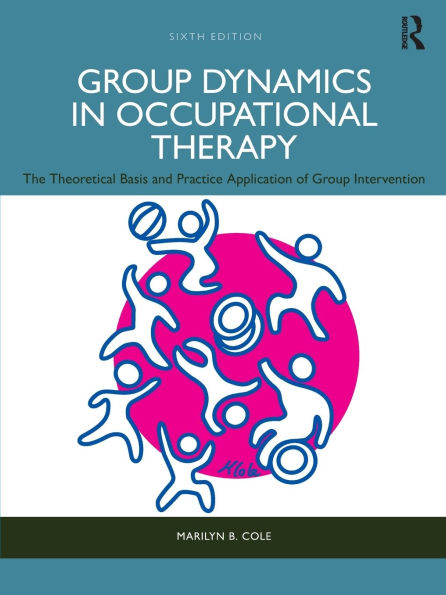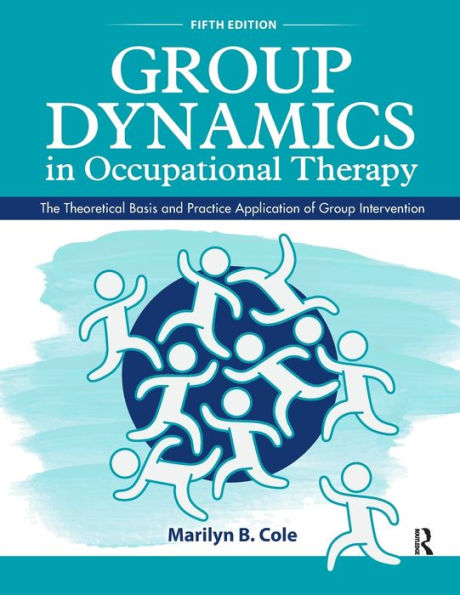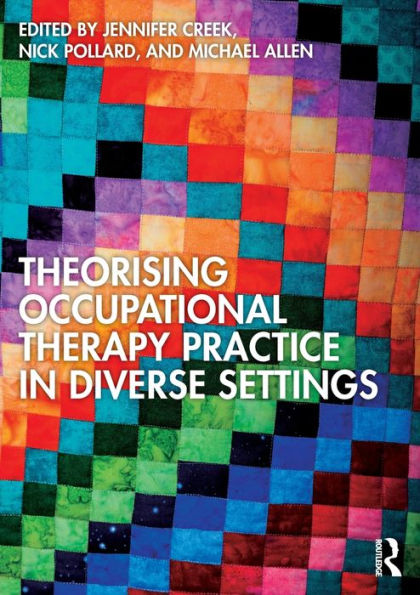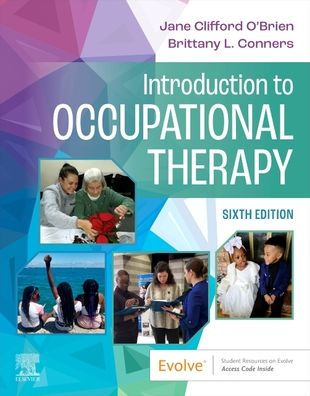Home
Group Dynamics Occupational Therapy: The Theoretical Basis and Practice Application of Intervention
Barnes and Noble
Loading Inventory...
Group Dynamics Occupational Therapy: The Theoretical Basis and Practice Application of Intervention in Bloomington, MN
Current price: $190.00


Group Dynamics Occupational Therapy: The Theoretical Basis and Practice Application of Intervention in Bloomington, MN
Current price: $190.00
Loading Inventory...
Size: Hardcover
This best-selling textbook, now in its Sixth Edition, provides the essential strategies and tools that occupational therapists need to design and organize client groups for enhanced, theory-based therapeutic interventions for physical, mental health, and wellness populations.
Updated in line with AOTA’s latest Occupational Therapy Practice Framework, the book is split into three sections. Section I introduces author Marilyn Cole’s 7-step format for group leadership, the cornerstone for the rest of the book. This is followed by chapters on the fundamentals of group dynamics, client-centered groups, and issues around diversity, inclusion, and cultural humility. Section II provides an overview of a range of theoretical approaches to group work, from psychodynamic, biomechanical, behavioral/cognitive, developmental, sensory, and occupation-based models.
Section III focuses on design of group protocols, synthesizing the theories, activities or modalities, leadership, and membership selection guidelines. Revisions include guidelines for using a client-centered group approach with marginalized populations, as well as designing occupational therapy groups with wellness and non-traditional populations for student service learning in the community.
Thoroughly updated throughout, and with new case studies drawn from a range of disciplines, this is an essential resource for any student or practitioner in the field of occupational therapy.
Updated in line with AOTA’s latest Occupational Therapy Practice Framework, the book is split into three sections. Section I introduces author Marilyn Cole’s 7-step format for group leadership, the cornerstone for the rest of the book. This is followed by chapters on the fundamentals of group dynamics, client-centered groups, and issues around diversity, inclusion, and cultural humility. Section II provides an overview of a range of theoretical approaches to group work, from psychodynamic, biomechanical, behavioral/cognitive, developmental, sensory, and occupation-based models.
Section III focuses on design of group protocols, synthesizing the theories, activities or modalities, leadership, and membership selection guidelines. Revisions include guidelines for using a client-centered group approach with marginalized populations, as well as designing occupational therapy groups with wellness and non-traditional populations for student service learning in the community.
Thoroughly updated throughout, and with new case studies drawn from a range of disciplines, this is an essential resource for any student or practitioner in the field of occupational therapy.
This best-selling textbook, now in its Sixth Edition, provides the essential strategies and tools that occupational therapists need to design and organize client groups for enhanced, theory-based therapeutic interventions for physical, mental health, and wellness populations.
Updated in line with AOTA’s latest Occupational Therapy Practice Framework, the book is split into three sections. Section I introduces author Marilyn Cole’s 7-step format for group leadership, the cornerstone for the rest of the book. This is followed by chapters on the fundamentals of group dynamics, client-centered groups, and issues around diversity, inclusion, and cultural humility. Section II provides an overview of a range of theoretical approaches to group work, from psychodynamic, biomechanical, behavioral/cognitive, developmental, sensory, and occupation-based models.
Section III focuses on design of group protocols, synthesizing the theories, activities or modalities, leadership, and membership selection guidelines. Revisions include guidelines for using a client-centered group approach with marginalized populations, as well as designing occupational therapy groups with wellness and non-traditional populations for student service learning in the community.
Thoroughly updated throughout, and with new case studies drawn from a range of disciplines, this is an essential resource for any student or practitioner in the field of occupational therapy.
Updated in line with AOTA’s latest Occupational Therapy Practice Framework, the book is split into three sections. Section I introduces author Marilyn Cole’s 7-step format for group leadership, the cornerstone for the rest of the book. This is followed by chapters on the fundamentals of group dynamics, client-centered groups, and issues around diversity, inclusion, and cultural humility. Section II provides an overview of a range of theoretical approaches to group work, from psychodynamic, biomechanical, behavioral/cognitive, developmental, sensory, and occupation-based models.
Section III focuses on design of group protocols, synthesizing the theories, activities or modalities, leadership, and membership selection guidelines. Revisions include guidelines for using a client-centered group approach with marginalized populations, as well as designing occupational therapy groups with wellness and non-traditional populations for student service learning in the community.
Thoroughly updated throughout, and with new case studies drawn from a range of disciplines, this is an essential resource for any student or practitioner in the field of occupational therapy.

















